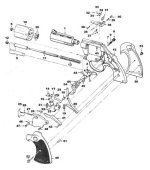Okay, so I ran into this Police Positive someone gave to my brother. They didn't want it because they couldn't get it working.
I took it apart and put it back together and I think I know what my problem is but not how to fix it. With the cylinder closed, I cannot pull back the trigger, hammer, or otherwise index. As in, I think I'm having a problem with my cylinder stop... I think... The trigger and hammer move freely when the cylinder is open. While I just started tinkering with it today, I don't have a lot of source material for disassembling. As far as I got I could put it back together thankfully.
Does anyone know what's going on with this revo?!? It's frustrating...
I took it apart and put it back together and I think I know what my problem is but not how to fix it. With the cylinder closed, I cannot pull back the trigger, hammer, or otherwise index. As in, I think I'm having a problem with my cylinder stop... I think... The trigger and hammer move freely when the cylinder is open. While I just started tinkering with it today, I don't have a lot of source material for disassembling. As far as I got I could put it back together thankfully.
Does anyone know what's going on with this revo?!? It's frustrating...

